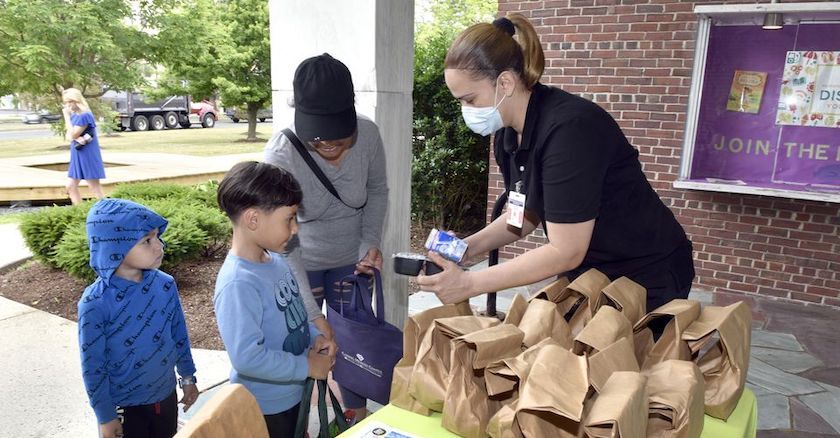Mayor Rahm Emanuel proclaimed that “we are opening doors to a new future for the Englewood community.” Whole Foods told Englewood residents that the store was about more than making a profit: It was providing healthy options in a food desert.
Nov. 14, 2022, was a much different sort of day in Englewood. Whole Foods was closing the store after six years. Now owned by Amazon, the company explained that the store had failed to generate sufficient “performance and growth potential.” Another supermarket, a Save A Lot, was planning to open on the abandoned site, but Save A Lot was no Whole Foods, to say the least. It had a widespread reputation for poor quality and indifferent service. Crain’s Chicago Business described Save A Lot stores as places where a shopper might encounter “spoiled lettuce, a dirty freezer case or an expired date on meat.” Englewood knew all about that. But Lori Lightfoot, the mayor who had succeeded Emanuel, responded that “we had no [other] takers. That is just the truth.”
What happened in Englewood wasn’t a shock. Grocery stores open and close all the time. What was surprising was the reaction of Brandon Johnson, who became mayor earlier this year. Johnson’s administration announced that it was exploring the possibility of opening at least one city-owned supermarket to address the food deficiencies in the poorest South and West Side neighborhoods.
It might be called an experiment in supermarket socialism. What could it look like? Well, it’s not hard to imagine a few possibilities. As detailed by Talia Soglin, a diligent Chicago Tribune reporter, the city could own the stores and operate them as a sort of public utility. It could own the properties but contract out the operation to a private company. Or, less dramatically, it could provide generous subsidies to private firms unable to make a profit in low-income territory. The city is conducting a feasibility study and is expected to announce the results early in 2024.
Whatever happens, the whole episode raises some larger questions about just what kinds of urban institutions ought to incorporate some form of public option. Think about it. We all accept that parks should be publicly owned. They have to be: Nobody would design and operate a park and hope to run it at a profit.
The same is almost entirely true of libraries. There are some private ones open to the public, but they are a rarity. We expect libraries to be financed with taxpayer dollars. Buses and rapid transit were privately owned at one time, but when they began to lose money, local governments took them over, and today hardly anyone questions this. We don’t always fund them very well, but we fund them.
Digital broadband networks are an interesting case. A fair number of them are municipally managed, and some of them, such as the system in Chattanooga, Tenn., have been notably successful. But most of them have been fought aggressively by private-sector Internet providers, and Republican legislatures have sought to prevent their expansion. So not everything is an open-and-shut case.
BUT WHAT ABOUT GROCERY STORES? To get a handle on this question, it’s useful to ask whether Whole Foods could have operated profitably in Englewood, or at least found a way to break even. The store did seem to offer lower prices than Whole Foods facilities in more affluent neighborhoods, but it never generated great demand. The aisles were often empty on Saturday afternoon, the busiest time of the week in most supermarkets.
The simplest explanation was that even at slightly lower prices, the cost of shopping at Whole Foods was higher than the residents of the neighborhood could afford. There was also a more cynical theory. One local observer commented that “there’s zero demand for organic fresh celery or fair-trade 80 percent dark chocolate in that neighborhood, even if you offer them free of charge. … People there want junk food from Walmart.”
Whole Foods executives argued initially that they could operate the Englewood store at reduced profit margins because rents in the neighborhood were lower than in other places. "We knew this wasn't a store that was supposed to gain a lot of profit,” a neighborhood leader told an interviewer. But whatever the profit margins were, they weren’t sufficient to satisfy Whole Foods' top management. Walter Robb, who had promoted the Englewood venture as Whole Foods CEO in 2016, believed he was taking a worthwhile step toward better nutrition and economic equity. He wasn’t expecting a money-maker. But Robb was gone by the time the store closed, Whole Foods had been taken over by Amazon, and the new management didn’t share Robb’s passion for social experimentation.
Robb’s often-expressed hope was that he was bringing better health to a food desert. Was Englewood a food desert? That depends on the data you decide to use. The U.S. Department of Agriculture (USDA) at one point defined a food desert as a community where urban residents had to travel a mile or more to the nearest grocery. According to recent USDA figures, about 23 million Americans live in food deserts, including 22 percent of Latinos, 26 percent of African Americans and 10 percent of white people. One academic study reported that in 2006 there were half a million people living in food deserts in Chicago alone.
Englewood may or may not have been technically a food desert by these criteria. At the time Whole Foods opened, the mayor’s office estimated that about 60 percent of the residents of West Englewood had to go at least half a mile to buy food. But there were places to go within a mile — not high-quality ones like Whole Foods, but stores of one variety or another.
In any case, several studies published in recent years have suggested that inadequate nutrition in poor neighborhoods is not simply a result of geographical distance from grocery stores. Studies conducted at Harvard and Brown universities found that the price of food is the determining factor. The Harvard researchers concluded that healthy diets — composed largely of fruits, vegetables and nuts — cost $1.50 a day more than meals that featured processed foods. That isn‘t a lot of money to many of us, but could it determine shopping practices in a place like Englewood? Perhaps.
Earlier research by a team of British and American nutritionists, funded by the Pennsylvania Fresh Food Financing Initiative, found that improved food access in low-income neighborhoods had little impact on the health of the residents. Stocking a new store with fruits and vegetables didn’t make a noticeable difference in food choices. “Simply building new retail infrastructure, in itself,” the researchers said, “may not be sufficient to promote behavior change related to diet.”
NONE OF THIS, of course, demonstrates that there are no nutrition problems in low-income urban communities, or that opening a well-managed store with reasonable prices might not make a positive difference. A city-run supermarket is one possible answer.
But we don’t have much to go on. Talia Soglin of the Chicago Tribune searched for municipally run groceries and cited one relevant example. There are some of these stores in Kansas, including some in very small communities, but it remains to be seen whether they can survive. The Wall Street Journal visited one this year and reported that it was struggling to break even, beset by competition from Walmart and Dollar General stores.
But it seems likely that some experiment along these lines will be tried in Illinois, and probably in Chicago. Earlier this year, the state Legislature authorized $20 million to support groceries in underserved areas. Some of this money would go to propping up struggling privately owned stores, but some could be available for city-owned operations of the kind being considered by the Johnson administration in Chicago.
“All Chicagoans deserve to live near convenient, affordable, healthy grocery options,” Mayor Johnson declared earlier this year. He said he wanted to envision “what a municipally owned grocery store in Chicago could look like.”
Is a city-run supermarket feasible in an underserved part of a big city? Notwithstanding the Whole Foods fiasco in Englewood, the truth is we just don’t know. It would take a lot of funding to find out. But we spend equally large sums of public money on a variety of dubious enterprises. Maybe Brandon Johnson’s vision is worth a try.












